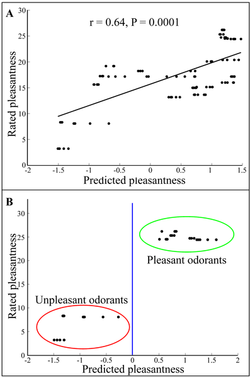by Tom Mansell, Science Editor
What do humans like to smell? One would think that smell preference would vary from person to person, given cultural and genetic differences. Some smells, though, seem to smell good to pretty much everyone, cross-culturally. In a paper released recently in PLOS Computational Biology, researchers working in Israel reported experiments with an "eNose," a chemical detection device that approximates the ability of the human nose to sense odor molecules.
Human subjects were given aroma samples and asked to rate their "pleasantness". The machine was then trained on this data, enabling it to detect the chemical aroma, then evaluate its pleasantness based on the human reaction. Once it was trained, the eNose was able to predict whether humans would find the scents of an array of essential oils pleasing or not.
The human participants in this study were from two different geographical areas, Israel and Ethiopia, and for the most part, the human preferences crossed these cultural boundaries. Smells that Israelis found pleasant were pleasant to Ethiopians, too.
So what does this have to do with wine? Well, let's look at a recent highly-rated Finger Lakes Riesling tasting note from Lenn:
Exceptionally expressive on the nose, layers of lime, orange blossom, The tension between energetic
papaya, green tea and peach mingle, with the papaya and peach becoming
more prominent as the wine warms.
acidity and a slightly creamy mid-palate sets the stage for and frames
layers of flavor — papaya, kaffir lime leaf, juicy peach, orange
blossom and golden raisin.
What were the top five essential oil aromas, listed in order of pleasantness?
- Lime
- Grapefruit
- Bergamot
- Orange
- Peach
The full article is available here.

